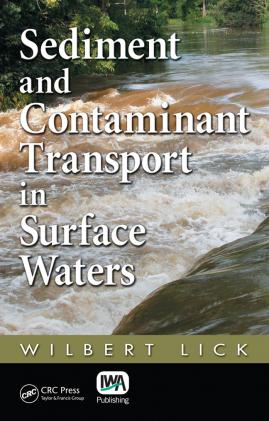 |
Sediment and Contaminant Transport in Surface Waters
Sediment and Contaminant Transport in Surface Waters

Sediment and Contaminant Transport in Surface Waters:
- Presents models of the resuspension, erosion, deposition, flocculation, and transport of sediments
- Describes the sediment-water flux and transport of hydrophobic contaminants
- Examines the effects of large-scale events such as floods and storms on the transport of sediments and contaminants
- Develops detailed process models as well as sediment and contaminant transport and water quality models
- Details applications of these models as well as their strengths and weaknesses
Understand and Address Major Environmental Threats to our Water
Contaminated bottom sediments and their negative impacts on water quality are a major problem in surface waters throughout the United States as well as in many other parts of the world. Even after elimination of the primary contaminant sources, these bottom sediments will be a major source of contaminants for many years to come. In order to determine environmentally-effective and cost-effective remedial actions, the transport and fate of these sediments and associated contaminants must be understood and quantified. This book details how to best approach contaminated sediments, allowing readers to better assess and address water quality and health issues, water body management, and potential remediation methods.
Sediment and contaminant transport is an enormously rich and complex field that involves physical, chemical, and biological processes as well as the mathematical modeling of these processes. While many books have been written on these broad topics, Sediment and Contaminant Transport in Surface Waters takes a more focused approach, highlighting areas that have been recently investigated but not covered thoroughly elsewhere.
The volume emphasizes the erosion, deposition, flocculation, and transport of fine-grained, cohesive sediments; the effects of finite rates of sorption on the transport and fate of hydrophobic contaminants; and the effects of major events such as floods and storms. Despite these emphases, the overall goal of the text is to present a general description and understanding of the transport of sediments and contaminants in surface waters as well as procedures to quantitatively predict this transport.
CONTENTS
Introduction
Examples of Contaminated Sediment Sites
General Properties of Sediments
Sediment Erosion
Flocculation, Settling, Deposition, and Consolidation
Hydrodynamic Modeling
Modeling Sediment Transport
The Sorption and Partitioning of Hydrophobic Organic Chemicals
Modeling the Transport and Fate of Hydrophobic Chemicals
References
Index
Co-published with CRC Press [1]
Publication Date: 19/10/2008ISBN13: 9781843392293Pages: 456 |
Print:
|